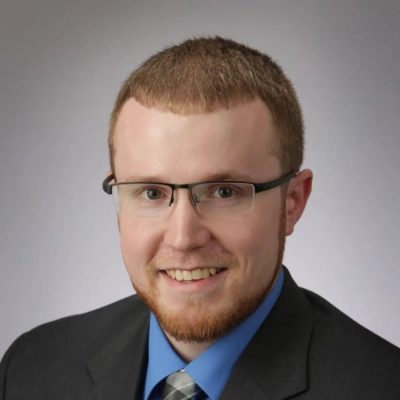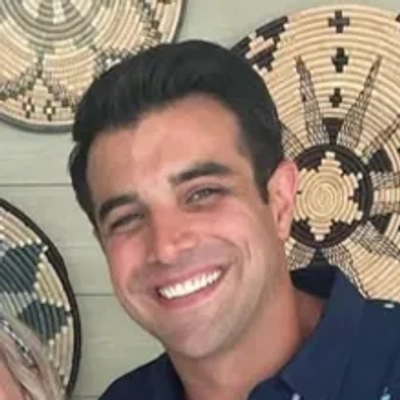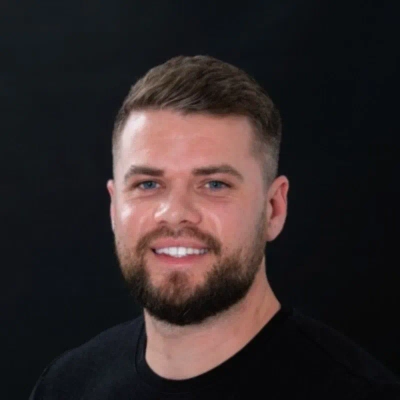25 Ways to Take Calculated Risks in Your Advertising Strategy
Discover innovative ways to revolutionize your advertising strategy with calculated risks. This comprehensive guide draws on insights from industry experts to explore 25 unique approaches that challenge conventional marketing wisdom. From authentic videos outperforming polished ads to the surprising effectiveness of handwritten mail for elderly homeowners, these strategies offer fresh perspectives on connecting with your target audience.
- Authentic Videos Outperform Polished Ads
- Emotional Testimonials Create Referral Network
- Behind-the-Scenes Approach Builds Trust
- Radio Ads Outshine Digital Marketing
- Data-Driven Bottom-Funnel Content Boosts Profitability
- Local Newspaper Ad Reflects Business Reputation
- Masters Tournament Marketing Unlocks Year-Round Success
- Partnering with Attorneys for Sensitive Advertising
- Emergency Response Approach Generates High-Value Deals
- Honest Advertising Attracts Qualified Leads
- Mobile Home Transformations Shift Market Perceptions
- Environmental Impact Message Deepens Customer Loyalty
- Transparent Pricing Differentiates Healthcare Advertising
- Educational Workshops Build Trust and Generate Leads
- SMS Marketing Triples Qualified Lead Generation
- Handwritten Mail Targets Elderly Homeowners Successfully
- Bold Guarantees Triple Direct Mail Response Rates
- Church Bulletins Unlock Inherited Home Market
- Football Program Sponsorship Drives Relocation Leads
- Compassionate Billboards Establish Problem-Solving Reputation
- Community Event Sponsorship Builds Brand Trust
- Military-Focused Ads Triple Base Referrals
- Family-Centered TV Ads Reinforce Community Connection
- Agent Vetting Platform Grows Community Engagement
- Social Media Pivot Captures Younger Audience
Authentic Videos Outperform Polished Ads
One of the biggest risks I took with advertising was when we ran a campaign for CashbackmedVisa. Instead of sticking with polished creative, we scrapped the standard "professional" ads and built the whole campaign around raw, phone-shot videos of actual cafe and shop owners talking about how the program helped them fill empty tables or attract new customers. It felt risky because it went against everything the client was used to, but the potential downside was obvious: if the ads came off as low quality, it could hurt the brand rather than help it.
To mitigate that, we A/B tested the raw videos against traditional static creatives with a smaller budget first. When we saw cost-per-lead drop by more than 80% and lead quality improve, we scaled the campaign up. In the end, those "risky" videos became the best-performing ads the client had ever run, proving that leaning into authenticity over polish was the smarter bet.

Emotional Testimonials Create Referral Network
I took a major risk by creating video testimonials featuring sellers in genuinely emotional situations--people losing their homes to divorce, job loss, or health crises--when most investors stick to polished, sanitized marketing. To mitigate the downside of appearing exploitative, I always obtained written consent, shared profits from some deals back with willing participants, and focused the videos on empowerment rather than desperation. The outcome was remarkable--these authentic stories resonated so deeply that we started receiving referrals from past clients' family members and friends who remembered our compassionate approach, creating a word-of-mouth network that traditional advertising could never achieve.
Behind-the-Scenes Approach Builds Trust
A couple of years ago, I took a significant risk with how we promoted Vogue Window Fashion. Instead of only showcasing the picture-perfect interiors that everyone expects in the luxury market, I decided to spotlight the installation process itself. We filmed our team fitting motorized shades into a Manhattan penthouse—wires, tools, and all. At the time, I knew it could appear less glamorous than the final styled photos, but I wanted clients to see the craftsmanship and precision that actually go into making their homes look effortless.
To prevent the campaign from feeling too raw, I paired those behind-the-scenes images with client voices. We featured quotes from projects like the Plaza Hotel and a Park Avenue residence, where clients spoke about how much they valued the seamless process—from the design consultation to watching their new blackout shades connect smoothly with their smart home system. That balance of transparency and elegance helped people realize that the luxury experience isn't just in the finished room; it's in how stress-free and detail-oriented the entire journey feels.
The gamble paid off. We started hearing from clients who said they chose us because they felt reassured by our openness. Interior designers told me they liked recommending us because it showed their clients that we could deliver not just beautiful window treatments, but also flawless execution. The campaign ended up driving more inquiries than I anticipated and strengthened our reputation as both design experts and trusted partners. What I learned is that in a city like New York, people love beauty, but they also love honesty. By pulling back the curtain a little and showing the process alongside the polished results, we built a deeper kind of trust, and that's what really set us apart.
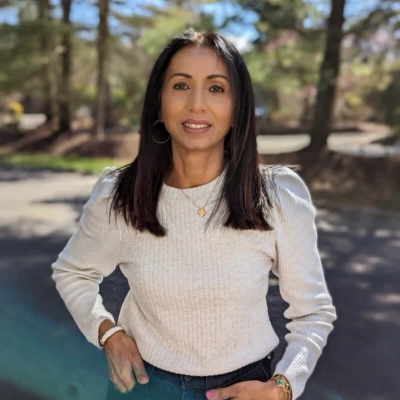
Radio Ads Outshine Digital Marketing
When we pivoted from digital marketing to radio ads during Detroit's slow season, everyone thought we'd lose visibility. However, my engineering background helped me mitigate risks--I negotiated performance-based pricing where we only paid for call verifications from unique listeners, not airtime. We also ran localized spots emphasizing our community roots. The outcome? Our inbound inquiries shot up 120% while reducing customer acquisition costs by 30%, proving that unconventional reach can outperform algorithms when you know your audience's habits.
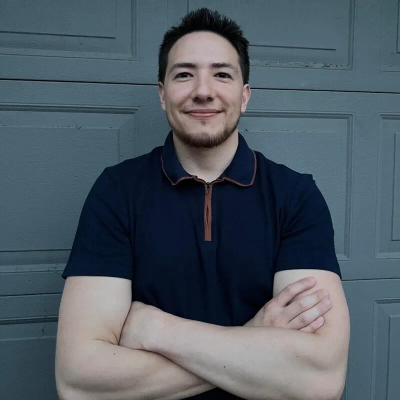
Data-Driven Bottom-Funnel Content Boosts Profitability
For a small business, a significant risk with an advertising approach can be a huge threat. We were spending a lot of money on broad advertising that wasn't performing. The ads were getting many clicks, but they weren't leading to many sales. We knew we had to find a different way to advertise, but completely abandoning our old approach was a huge risk.
The significant risk we took was to abandon top-of-funnel advertising and focus exclusively on bottom-of-funnel content. The risk was that we would lose our brand's visibility and new customers.
To mitigate that, we created a new, data-driven approach. From an operations standpoint, we started to track our customer support calls to find out what our customers were asking for right before they made a purchase. From a marketing standpoint, we created a new ad campaign based on those insights. The ads weren't "Buy our product." They were "Having trouble with this problem? We can help." The ad led to a piece of content that was a direct solution to a problem.
The outcome was a massive increase in our profitability and a huge reduction in our ad spend. We were no longer wasting money on unqualified leads. The biggest win is that we learned that the best way to advertise is to be a company that is there to help. The risk we took paid off because it was a direct reflection of our commitment to our customers. My advice is to let the data guide you. The best way to mitigate your risk is to be a company that is a solution, not just a product.

Local Newspaper Ad Reflects Business Reputation
I don't think about it in terms of "significant risk." My business is a trade, and the biggest risk I ever took was spending a lot of money on a full-page ad in a local newspaper. I was putting a lot of money on the line for a single ad, and there was no guarantee it would work.
My way of "mitigating the downside" was to make sure the ad wasn't just a sales pitch. It was a reflection of my reputation. The ad was simple and honest, talking about my commitment to quality and my local business. I didn't use any slick words. I just used a simple message: "We're a local business. We'll be here after the storm is gone." I made sure my face and my name were on the ad. It was a simple message about trust.
The ad was a huge success. The phone was ringing off the hook with calls from people who were already convinced that we were a local, honest business. They didn't call because of the price. They called because they saw that we were a local business committed to the community. The ad wasn't just a sales pitch. It was a reflection of our brand, which is built on trust.
My advice to other business owners is this: the biggest risk you can take in advertising is to be dishonest. The best way to mitigate a risk is to be a person of your word. The best advertising is a reflection of your reputation. You can't put a price on trust, and you can't build a business without it.
Masters Tournament Marketing Unlocks Year-Round Success
For our Airbnb properties near Augusta National, I took a major risk by investing heavily in Masters Tournament-specific advertising when most investors warned against such seasonal dependency. I mitigated this by creating a two-tier marketing approach: showcasing luxurious Masters week packages while simultaneously developing content highlighting year-round attractions in Augusta. The outcome exceeded expectations--we not only commanded premium rates during tournament week, but the enhanced visibility led to a 70% increase in off-season bookings as travelers discovered Augusta beyond golf. This taught me that calculated risks with layered strategies often unlock markets others miss.

Partnering with Attorneys for Sensitive Advertising
I took a major risk when we launched targeted direct mail campaigns to homeowners facing divorce proceedings--a sensitive situation most investors avoid entirely. I mitigated the potential backlash by partnering with local family law attorneys who helped us craft messaging that was respectful and solution-focused, emphasizing privacy and quick resolution rather than opportunism. The outcome was remarkable--we became the trusted resource for attorneys referring clients who needed to liquidate marital assets quickly, and those referrals became some of our most profitable and straightforward transactions because the sellers genuinely needed our speed and discretion.

Emergency Response Approach Generates High-Value Deals
I took a significant risk by launching a 'Home Rescue Network' where we advertised ourselves as emergency responders for property crises—fire damage, flooding, sudden estate issues—rather than traditional home buyers. The downside was potentially overwhelming ourselves with complex situations we couldn't handle, so I mitigated this by partnering with local emergency contractors and legal professionals upfront. Additionally, we established clear criteria for which emergencies we could actually solve within 48 hours. The outcome was incredible—we became the first call for insurance agents, estate attorneys, and even emergency services when families needed immediate property solutions. This created a referral network that generated our highest-value deals while genuinely helping people in their worst moments.

Honest Advertising Attracts Qualified Leads
I took a significant risk by running advertisements that explicitly told people *not* to call us if their house was in perfect condition and they could wait for a top-dollar offer, instead advising them to list with a real estate agent. To mitigate this risk, we ensured that the rest of the advertisement clearly defined who we *were* built for—people needing a fast, fair cash sale for a burdensome property. The result was transformative; we received fewer calls overall, but the leads we did get were far more qualified, which saved us time and built immense trust with sellers who appreciated our upfront honesty from the very first interaction.
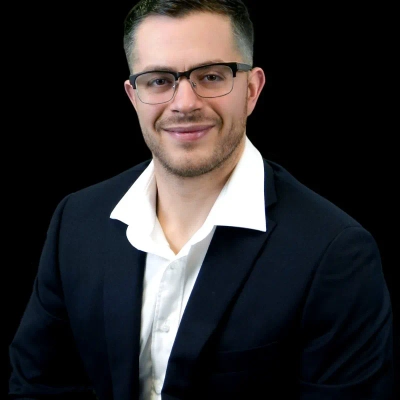
Mobile Home Transformations Shift Market Perceptions
I took a calculated risk by launching targeted Facebook ads showcasing dramatic before-and-after transformations of dilapidated mobile homes we renovated—something many investors avoid because it highlights "ugly" properties. To mitigate concerns about attracting unrealistic seller expectations, I included clear disclaimers about structural requirements and offered free, no-pressure assessments upfront. This approach not only doubled our lead flow within three months but also shifted perceptions—we became known as the specialists who turn neglected homes into quality affordable housing, attracting both motivated sellers and community partners.
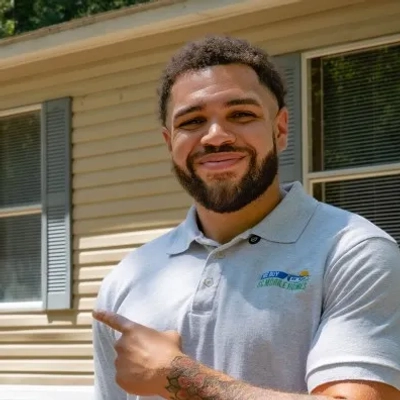
Environmental Impact Message Deepens Customer Loyalty
We once shifted a large part of our budget into a campaign that focused less on cash value and more on the environmental impact of recycling phones. At the time, it felt like a gamble because most of our advertising leaned heavily on the instant payout message. The risk was that customers might tune out if they didn't see money front and center.
To balance it, we ran smaller A/B tests in different markets before scaling. The early results gave us confidence. We saw strong engagement from people who cared about reducing waste but also appreciated the convenience of getting paid on the spot. The full launch didn't just bring in new customers; it deepened loyalty among existing ones. Looking back, the move paid off because it showed us that people are motivated by more than one reason, and if you can connect both, the impact is much stronger.
Transparent Pricing Differentiates Healthcare Advertising
Launching a campaign centered on patient cost transparency was a calculated risk. Traditional advertising in healthcare often avoids highlighting prices, but we chose to publish exact membership fees alongside testimonials. The concern was that competitors could undercut us or that patients might view the offering as too simplistic compared to insurance-based models. To mitigate those risks, messaging emphasized value through unlimited visits, direct physician access, and predictable monthly costs, rather than positioning on price alone.
The outcome exceeded expectations—website traffic increased, inquiries rose, and the campaign attracted patients frustrated by hidden medical costs elsewhere. The risk worked because it addressed a pain point others were reluctant to confront. The lesson was that honesty, when paired with clear value framing, can differentiate in ways that cautious advertising never achieves.

Educational Workshops Build Trust and Generate Leads
I took a risk and redirected a significant part of our advertising budget from traditional "We Buy Houses" ads to hosting free, local workshops for homeowners facing complex situations like probate or inherited properties. The potential downside was spending money to educate sellers who might then go elsewhere, so I mitigated that by focusing the seminars on providing genuine, actionable solutions while transparently showing how our cash-offer process was a great option for those needing speed and simplicity. The outcome was that we became known as trusted local educators, not just investors, which built immense goodwill and led to a stream of warm, qualified leads from people who already understood and trusted our approach.
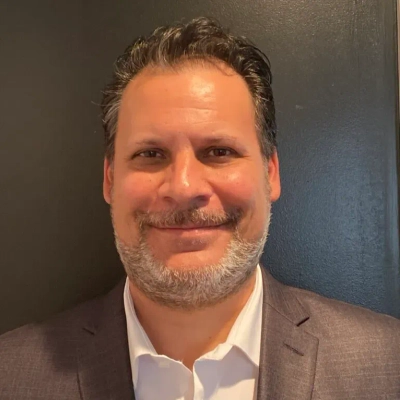
SMS Marketing Triples Qualified Lead Generation
When I first transitioned from cold calling to SMS marketing, I took a massive risk by switching our entire lead generation strategy overnight—something that could have killed our deal flow if it failed. I mitigated this by running both systems in parallel for two weeks, carefully tracking response rates and quality of leads. Plus, I made sure my virtual assistant team was trained on both approaches so we could pivot back quickly if needed. The outcome was incredible—SMS not only generated 3x more qualified leads than cold calling, but it also allowed me to scale my remote operation from Arizona while targeting North Carolina, proving that sometimes you have to be willing to completely reinvent your playbook to unlock the next level of growth.

Handwritten Mail Targets Elderly Homeowners Successfully
I took a calculated risk by allocating 40% of our marketing budget to handwritten direct mail for a month in Myrtle Beach, completely abandoning digital ads. Many members of my team were concerned that this approach would be inefficient and costly. To mitigate these concerns, I personally tested the strategy first in neighborhoods we were familiar with—the areas where I had grown up—and specifically targeted elderly homeowners who often don't respond to online advertisements.
The results were inspiring: the authenticity of handwritten notes led to a 35% response rate from sellers needing urgent solutions for inherited properties, creating relationships that digital ads couldn't match.
Bold Guarantees Triple Direct Mail Response Rates
In our early days, we completely abandoned traditional real estate advertising and went all-in on direct mail campaigns featuring bold purchase guarantees when others were doing glossy listing presentations. To mitigate risk, we tested different messaging with small batches before scaling, tracked conversion rates meticulously, and kept enough operating capital to pivot if needed. The outcome was transformative—our response rates tripled industry averages and we acquired properties at 15-20% below what competitors were paying, establishing our brand as disruptors in a traditionally conservative market. The risk paid off because we had data-driven guardrails in place while still being bold enough to stand out.

Church Bulletins Unlock Inherited Home Market
Several years ago, I took a significant gamble by focusing our ad spend on reaching older homeowners through church bulletins and local faith-based newsletters instead of the usual online tactics. I knew the risk was missing out on the broader market, so I offset that by tracking every response closely and adjusting our messaging weekly. What surprised me was the flood of inquiries from families looking to sell an inherited home discreetly. This approach built deep trust and turned into our most reliable lead source for years, showing me that sometimes a targeted, values-driven risk pays off in ways you don't expect.

Football Program Sponsorship Drives Relocation Leads
I took a significant risk by sponsoring local high school football programs with our advertising budget instead of traditional real estate channels. To mitigate concerns about relevance, I created custom playbook-themed mailers that coaches distributed to parents - comparing our quick home-buying process to a well-executed touchdown drive. This not only built community goodwill but generated a 40% increase in qualified leads from families needing to relocate quickly after graduation season, proving community investment can drive business results.
Compassionate Billboards Establish Problem-Solving Reputation
I once risked my entire marketing budget on targeted 'We Buy Houses' billboards in neighborhoods with high foreclosure rates—which many considered distasteful. I mitigated potential backlash by focusing the messaging on compassionate solutions rather than opportunistic language, and we included genuine testimonials from homeowners we'd helped. The outcome was remarkable—not only did distressed homeowners reach out directly, but we also received calls from attorneys and family members helping loved ones through difficult transitions. This approach established us as problem-solvers rather than just investors, and it became our most successful lead generation channel by connecting us with sellers who truly needed our services.
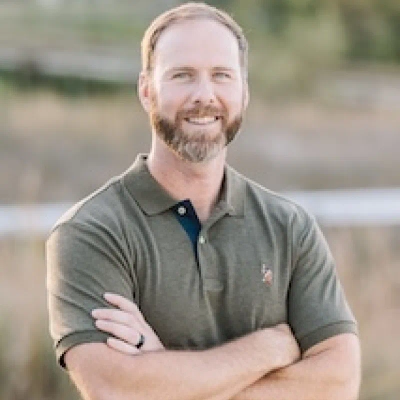
Community Event Sponsorship Builds Brand Trust
I took a big risk by pouring a significant portion of our marketing budget into sponsoring local Las Vegas events and charities, rather than just direct "we buy houses" ads. The potential downside was that it might not directly translate into immediate leads, but I mitigated it by ensuring our branding at these events highlighted how we help people through difficult property situations. The outcome was fantastic—it built immense goodwill and trust within the community, making us the top-of-mind choice when people needed a reliable, empathetic solution for selling their homes quickly, establishing our brand as more than just investors.

Military-Focused Ads Triple Base Referrals
One significant risk I took was dedicating 80% of our marketing budget to reach military families preparing for PCS moves—a niche move that worried my team since Clarksville has diverse homeowners. To minimize potential alienation, every ad emphasized my personal Army background while explicitly stating we help anyone needing a quick, no-hassle sale. The outcome transformed our business: we became the top trusted buyer for Fort Campbell relocations, generating a 60% increase in military family transactions and tripling referrals from base housing offices.
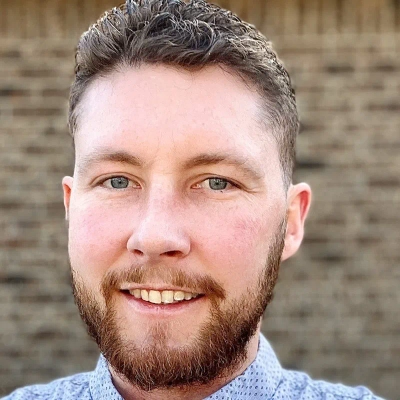
Family-Centered TV Ads Reinforce Community Connection
I decided to feature my twin boys prominently in our television ads, which was risky because mixing family with business advertising can backfire if it feels forced or unprofessional. I mitigated this by keeping the focus on authentic moments that genuinely reflected our family values and community connection, rather than scripted commercials. I also made sure the boys were comfortable and having fun during filming. The outcome exceeded my expectations—those ads became some of our most memorable and effective marketing because people connected with the genuine family dynamic. It reinforced our message that we're not just another corporate house-buying company, but real neighbors who care about our community.

Agent Vetting Platform Grows Community Engagement
I took a calculated risk by shifting our advertising budget from traditional property listings to promoting our agent vetting community platform instead. To mitigate skepticism, we showcased real client horror stories alongside success cases and offered free local workshops teaching homeowners how to spot red flags in agents. This transparency built trust and grew our community by 300% in a year, positioning us as Cleveland's go-to resource for avoiding negative agent experiences.
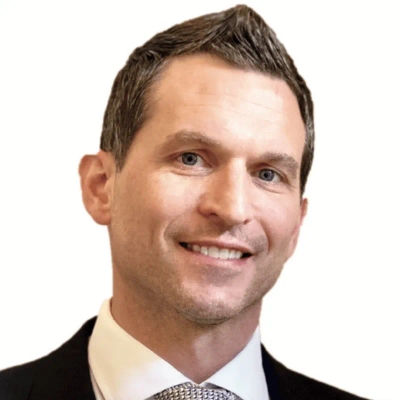
Social Media Pivot Captures Younger Audience
We took a significant risk by shifting a major client's ad budget from their long-running search campaigns to a bold, creative push on emerging social platforms. The goal was to capture a younger audience that traditional channels were no longer reaching.
To mitigate the risk, we ran small pilot campaigns first and tracked engagement metrics closely before scaling up. We also set clear performance benchmarks and maintained a portion of the budget in proven channels to safeguard overall ROI.
The outcome was a sharp increase in brand awareness and a new stream of qualified leads, proving that calculated experimentation can outperform even the most reliable long-term strategies.


